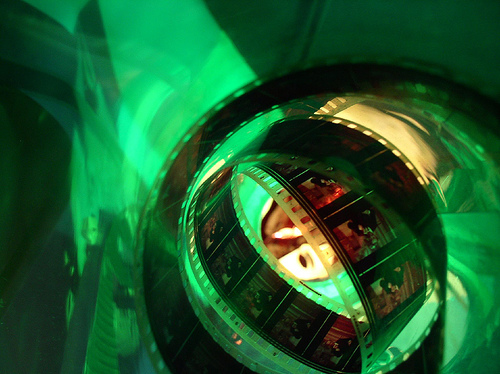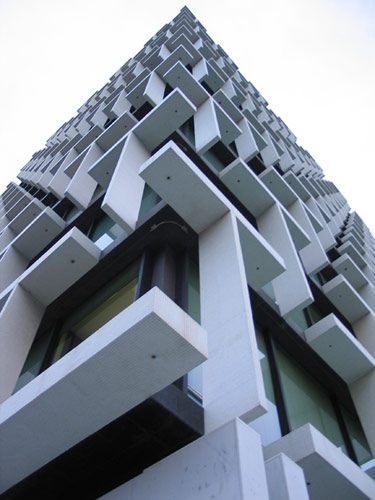Getting to the Core Idea in your Novel
As we continue on with exploring cinematic secrets that can supercharge your novel, we’re going to focus on something that is crucial to filmmakers, and that is getting a clear vision for the story.
Novelists, just like filmmakers, need to truly understand the story they are trying to tell and what impact or take-home feeling or message they want to leave with their readers. Just coming up with a neat idea for a novel is only the first step, and is no guarantee they will have a terrific book.
Filmmaker Gustav Mercado says, “If you want to become an effective storyteller, one of the most important things you can do is to have a clear vision of your story, so that it reflects your unique take on it, not somebody else’s. . . . Anything and everything that is included in the composition of a shot will be interpreted by an audience as being there for a specific purpose that is directly related and necessary to understand the story they are watching [or reading, in the case of a novel].”
Writers, as well as filmmakers, need to first identify the core ideas of their story in order to create what’s called an image system. Once that is determined, they can design a system that supports and brings out that core idea in either obvious or subtle ways consistently implemented throughout the book.
Dig Deep
So before you choose which “shot” you will use for a particular segment of your scene, ask these questions:
- What are the main elements (or one main element) that should dominate the scene and be brought to the reader’s attention?
- What should and shouldn’t be included in the shot?
- What meaning will be conveyed by the shot subconsciously?
Of course, this is all in relation to that high moment you are striving for. And overlaying all this is your main theme or core idea. You’ve perhaps been told you should be able to sum up your premise in a sentence or two (elevator pitch). In that premise lies your core idea for your book.
You may have gotten a germ of an idea for your novel, and from that you developed characters with issues and goals, and you came up with settings and scene ideas to play out your story line. But overlaying all that is your core idea. And that’s where the decisions about scene compositions come in.
In Just a Few Words
See if you can encapsulate the main theme or idea of your story in one line or a few words. For example, the core idea behind the movie Rocky might be about gaining self-respect. That’s a simple summation. But if you can come up with a basic thematic concept, you can gear all your shots and special effects to bring out that theme.
All the angles used; the colors, shapes, and sounds layered; and the special effects (tweaked time, distorted lenses, etc.) can all be selected to enhance that theme. Using visual motifs and symbols repeatedly through a novel press home the themes in a powerful way.
Many novelists do this already, but understanding some of the cinematic secrets filmmakers use will give the writer a few more useful tools in that writers’ toolbox.
Mercado claims that “every shot counts, no matter how inconsequential (and no shot should be inconsequential in the first place since it is included in your film, right?)”
Do you consider every segment of every scene in your novel important? Is it worth it to you to design each scene so that it nurtures your themes? Do you feel every word counts and should count?
If you approach the art of novel writing in a manner similar to a filmmaker like Mercado, you will take the time to set up your shots and effects such that they will supercharge the story you are trying to tell.
Going beyond the Choice of Camera Shot
I mentioned that filmmakers use a term called “image systems.” Novelists can learn much from this. Image systems include repeating shot compositions—for example, a movie might use a certain shape or image in a landscape and repeat it throughout the film. An image system often uses specific colors—some which may not be easy at first to notice, and that work on a subliminal level in some way.
Great novelists know the power of motif and symbolism, often using something like a repeated word or phrase, or an object of importance to the character, to bring a richness to the story and to enhance the theme of their novel.
In effect, they are creating something similar to an image system. By taking a look at some of the ways filmmakers develop image systems for their films, novelists can learn much and expand their technique. So next week we will explore this topic in more depth.
This week, think about your novel’s themes and jot down a list of words that come to mind. State the core idea for your novel, then think about elements that might work in an image system for it. Are there certain colors that feel right? Certain objects or a particular landscape that might hold meaning or symbolism? We will go more into this in future posts, but for now, just start playing with some ideas and see what you come up with. This can be done at the plotting stage or even after your novel is complete.












Thank you for sharing your expertise. Again and again, with each of your posts I learn.
I often think with my mind’s eye in a filmmakers style. Great post.